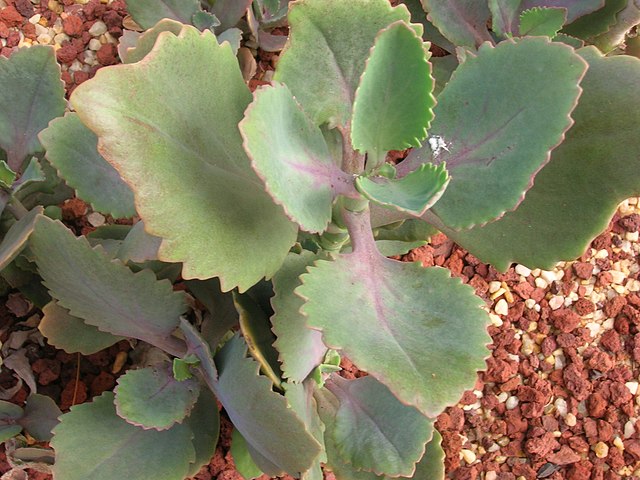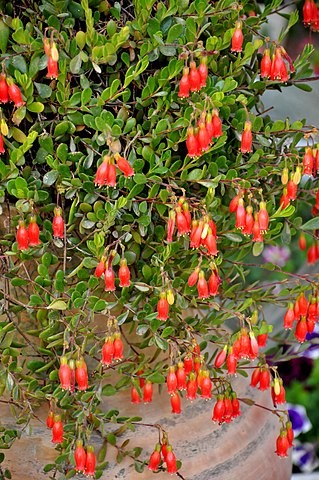Kalanchoe is a succulent mainly native to Madagascar while a lot of its varieties are found in Brazil, tropical Africa, and Southeast Asia as well. Because of its ease of propagation and low maintenance requirements, it is now cultivated as a houseplant all over the world. It is a favorite among plant lovers for the beautiful flowers and succulent greenery it offers. Let us find out the caring needs of a Kalanchoe plant for enjoying the full beauty of this succulent.
Whether you are beginning your gardening journey or have previous gardening experience, this Kalanchoe plant care guide will be extremely helpful to keep your plant in good shape. Here are some important aspects of Kalanchoe care.
What Container to use For Kalanchoe Succulents?
The container or pot of your plant in its home. It is, therefore, important to choose the right pot for your Kalanchoe. A 4″ to 6″ pot would be ideal for planting Kalanchoe. Since Kalanchoes have sensitive roots requiring ample aeration, clay pots are the most suitable containers for planting them. Placing pebbles at the bottom of these pots will allow excess water to drain out.
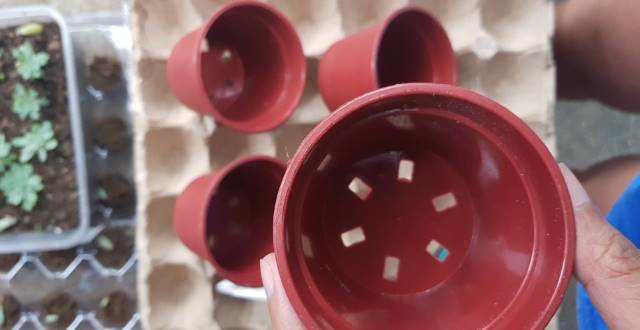
A drainage tray is a must for this succulent. For other kinds of pots, ensure to incorporate drip holes in the bottom to drain the excess water out.
Kalanchoe Soil Mix and Fertilizer
Using the right soil mix and feed ensures the healthfulness of Kalanchoe.
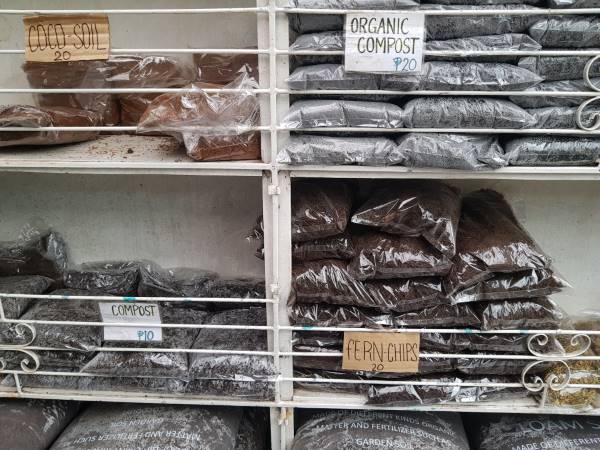
What type of soil do Kalanchoes like?
Kalanchoes need a light soil mix that does not retain too much moisture. A mix specially designed for succulents and cacti can be used. A homemade soil mix can be created from peat moss and perlite using them in 3:2 for best Kalanchoe growth.
What is the best Kalanchoe fertilizer?
A balanced organic fertilizer is the best choice for Kalanchoes.
How do you fertilize a Kalanchoe plant?
Feed your Kalanchoe with a balanced organic fertilizer every month throughout the growing season. Stop fertilizing the Kalanchoe at the end of September for about 6 weeks as it goes into a resting stage just before blooming. Fertilization can be started again as soon as the first bud starts appearing.
Kalanchoe Temperature Requirements
Maintaining adequate temperature is quite essential for the survival of the Kalanchoe plant. Temperature needs must be adjusted both for indoor and outdoor succulents.
Is Kalanchoe an indoor or an outdoor plant?
Kalanchoe is a household plant usually grown indoors because of the temperatures it can bear. It can, however, be grown outside in a pot so that it can be shifted into the shade to prevent it from direct sunlight. Additionally, the Kalanchoe pot should be conveniently shifted indoors if the temperature drops below the tolerance level.
Read in detail about this here.
Caring for Kalanchoe plant outdoor
Kalanchoe can be grown outdoors in a region with a warmer climate since it is native to tropical and subtropical climates. Outdoor Kalanchoes are more susceptible to pests thereby requiring pest treatment more often.
- Kalanchoe winter care:
The succulent can easily survive mild winters with temperatures around 45°F. It can die if the temperature falls below this level even if exposed to such a low temperature for only a few hours. Protecting Kalanchoe from frost is also essential for its survival.
2. Kalanchoe summer care:
In the summer months, it is ideal to protect Kalanchoe from direct sunlight to prevent damage to its leaves. Expose the succulent to indirect sunlight by placing it in shade. The best Kalanchoe bloom can be seen when the temperature ranges between 65°F to 85°F. Protecting Kalanchoe from rain is also important during these months.
Caring for Kalanchoe plant indoor
Kalanchoe needs less care when planted indoors. It receives indirect sunlight and the temperature remains ideal for plant survival. You only need to avoid overwatering your Kalanchoe to prevent any damage. Also, keep them away from drafts as concentrated cold or hot air will spoil the plant.
Kalanchoe Water Requirements
Regular watering helps the plants in their growth. Succulents, like Kalanchoe, demand much less attention in this ‘care’ aspect.
How often should a Kalanchoe be watered?
All succulents including Kalanchoes tend to store water in their leaves or stems and don’t require much watering. Since the moisture levels in different regions vary greatly, consider checking your Kalanchoe’s soil every week. If the top 1 ½ to 2 inches of soil is fully dry, it is time to water your Kalanchoe.
If not, wait for it to dry completely. An indoor Kalanchoe might need water every 2 to 3 weeks while an outdoor one might require it every 8 to 10 days. Watering frequency is higher in summers and reduces almost to half in winters depending again on the moisture levels in your area.
Kalanchoe Sunlight Needs
Kalanchoes are light-loving plants and need plenty of it for proper growth. However, the succulent needs a lot less light during its resting period just before the blooming time.
Do Kalanchoes need direct sunlight?
No, direct sunlight is damaging for a Kalanchoe as the plant leaves might burn when exposed to high temperatures. However, Kalanchoe requires plenty of bright indirect sunlight for adequate growth. Having said that, direct winter sunlight won’t damage your Kalanchoe since it is not harsh on the succulent.
Kalanchoe Growth Care
Growing a Kalanchoe can be the source of ultimate joy for a plant lover. It can be grown from an existing plant while caring for its temperature, fertilization, sunlight, and watering needs.
Is Kalanchoe easy to grow?
Kalanchoe, like other succulents, is extremely easy to grow and requires very little care. For growing a new Kalanchoe plant from an existing one, let us find out more about its propagation:
How do you propagate Kalanchoes?
Kalanchoe propagation involves the use of a 2 to 3 inches long leafy stem of the existing mature plant. You need to dry this stem for a few days after breaking it off from your Kalanchoe.
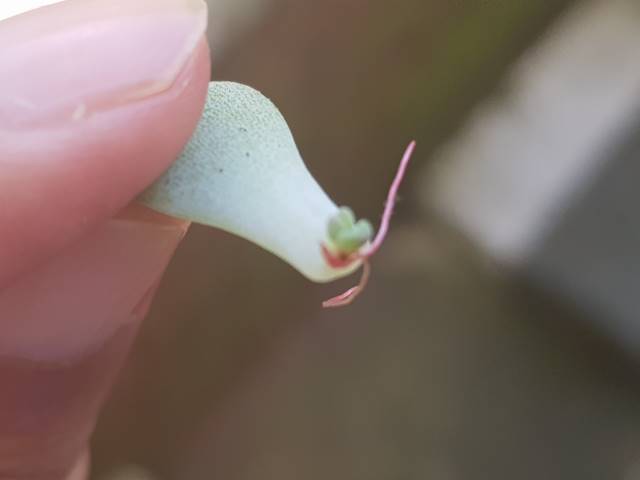
Once completely dry or the end appears to have healed, stick it in a new pot filled with pre-moistened soil mix and leave it untouched for a month. The new plant will develop roots and start forming leaves. Start watering the new plant at this stage to further its growth.
Kalanchoe Pruning Routine
Kalanchoe pruning or cutting back your Kalanchoe is an important part of the plant care routine. It not only keeps the succulent in good shape but also promotes blooming.
Should I cut back my Kalanchoe?
Yes, prune your Kalanchoe after every bloom as leaving the spent blooms attached to the plant will inhibit future Kalanchoe blooming. A regular Kalanchoe pruning routine will make the plant fuller and stockier. Also, pinch-pruning the growing plant’s tips will encourage branching. It is recommended to water Kalanchoe less frequently after a pruning session.
Reviving a Kalanchoe Plant
Inappropriate Kalanchoe care leads to an unhealthy plant with dying leaves or a thin appearance. Additionally, the Kalanchoe bloom might subside earlier than expected if the succulent does not receive the right growing conditions.
Why is my Kalanchoe dying?
If your Kalanchoe is dying, you are probably watering it wrong. Like other succulents, Kalanchoe needs very less water whether grown indoors or outdoors.
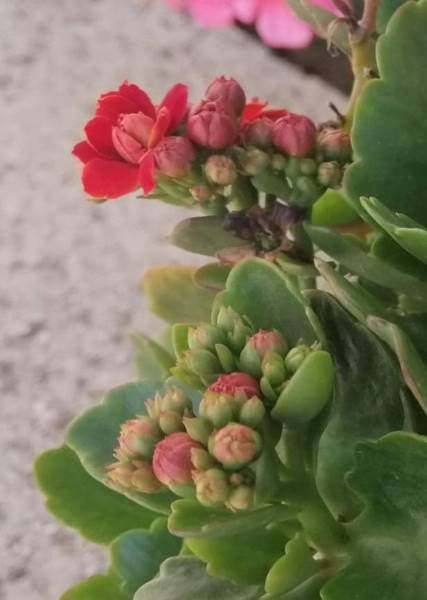
Soggy soil rots the sensitive roots of Kalanchoe and eventually kills the plant. Water your Kalanchoe only when the top 1 ½ to 2 inches of soil is completely dry. On the other hand, if your plant is seemingly thin and leggy, you might need to increase its exposure to light.
Read more about Bringing Your Kalanchoe back to life here.
How to get Kalanchoe bloom again?
Kalanchoes experience photoperiodic blooms i.e. their blooming is dependent on their exposure to light. The succulent experience its natural bloom in early spring when the day lengths are shorter.
To make Kalanchoe bloom again, expose the plant only to a few hours of light while keeping it in a dim room or a closet for 12 to 14 hours daily. Six weeks of limited light exposure will force a second bloom for Kalanchoe. Additionally, reduce watering frequency during these six weeks as you would do in winters. Once the flower buds start forming, both watering and light conditions can be kept normal again.
Kalanchoe Pest and disease prevention
Preventing your Kalanchoe from pests and diseases is an important aspect of the Kalanchoe plant care routine. This succulent is susceptible to spider mites, mealybugs, aphids, nematodes, and scale insects. Kalanchoes kept outdoors are more prone to pests than the ones grown indoors. Infected Kalanchoe will show some signs like torn or bitten leaves, honeydew on its leaves, or fading of leaves. Kalanchoe might also develop diseases because of poor care routines or pests. Such diseases include mealy dew, late blight, stem rot, and gray rot. Along with following a proper care treatment for Kalanchoe, a nontoxic treatment like neem oil can be used to prevent Kalanchoe from pests and diseases.
Kalanchoe – A popular Succulent Plant for all
Kalanchoe is a popular succulent among plant lovers for its ease of growth and maintenance. Caring for a Kalanchoe plant involves very little effort on your part and can be done successfully even if it is your first plant. Just follow a routine based on the Kalanchoe care requirements discussed above and your succulent will remain healthy throughout the year.


